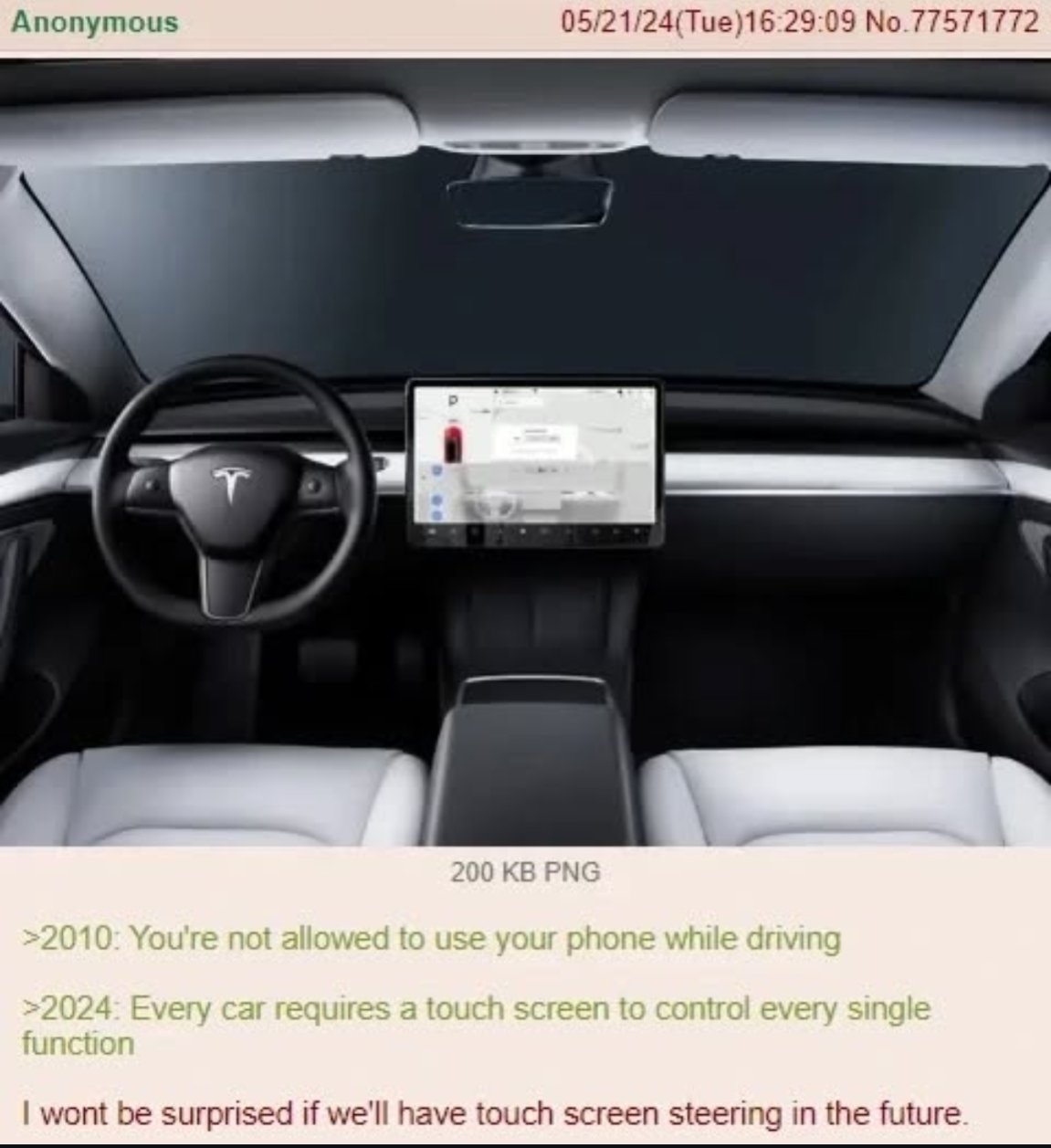this post was submitted on 01 Apr 2025
601 points (98.1% liked)
Greentext
5933 readers
1427 users here now
This is a place to share greentexts and witness the confounding life of Anon. If you're new to the Greentext community, think of it as a sort of zoo with Anon as the main attraction.
Be warned:
- Anon is often crazy.
- Anon is often depressed.
- Anon frequently shares thoughts that are immature, offensive, or incomprehensible.
If you find yourself getting angry (or god forbid, agreeing) with something Anon has said, you might be doing it wrong.
founded 2 years ago
MODERATORS
you are viewing a single comment's thread
view the rest of the comments
view the rest of the comments

that makes sense, thanks. i havent ever used an OLED display, so i just didn't know about the differences
Displays have to be driven in multiplex because you can't just wire each of the 6 million subpixels (4 million for Samsung OLED cuz they alternate red/blue in a checkerboard) of a 1080p screen to a pin of a chip that has the screen RAM and powers subpixels continuously. Therefore, the chip will have row and column outputs, and use a technique called "multiplexing" that powers only one row at a time.
It's really about how the pixels respond to being driven. In TFT LCDs, driving a subpixel will charge its memory capacitor to a desired voltage, corresponding to the target brightness. Over the next few milliseconds, the subpixel will fade into that color as the nematic elements twist in response to voltage. Over about one second, the capacitor would lose its charge and the LCD would fade to its resting state (all-white for positive ones). You can see this if you suddenly kill power to the driving board while leaving the backlight on. So it needs to be recharged (redriven) in a few tens of milliseconds. Subpixels do get a little brighter between refreshes but that's very subtle and not noticeable at 60 Hz unless it's a passive matrix (STN without those capacitors, like a Game Boy screen) under flickery lighting.
Meanwhile, OLED pixels are black while not currently being refreshed, so the difference in brightness just before and during refresh is not about +0.1 % but -100 %, just like with CRT phosphor. It relies on human eyes' persistance of vision to create an illusion of a complete image. It varies from person to person, but anything below about 60 Hz gets uncomfortable after long periods, and below 40 Hz (especially around 10-20 Hz) can be seizure-inducing. But again, the magnitude of flicker matters as much as frequency.